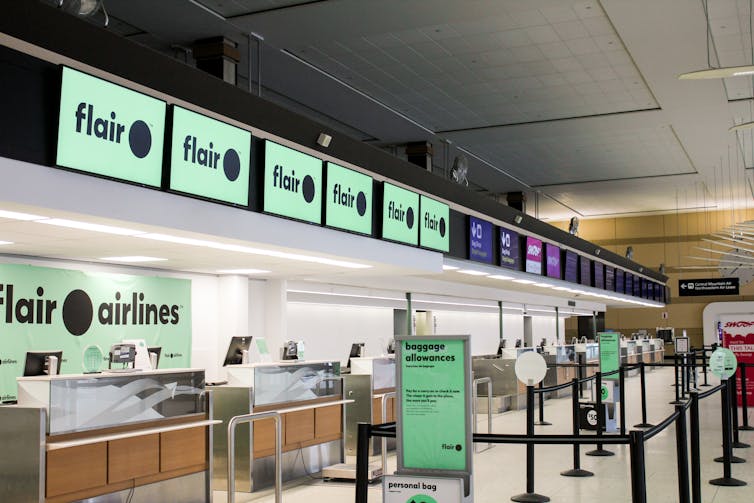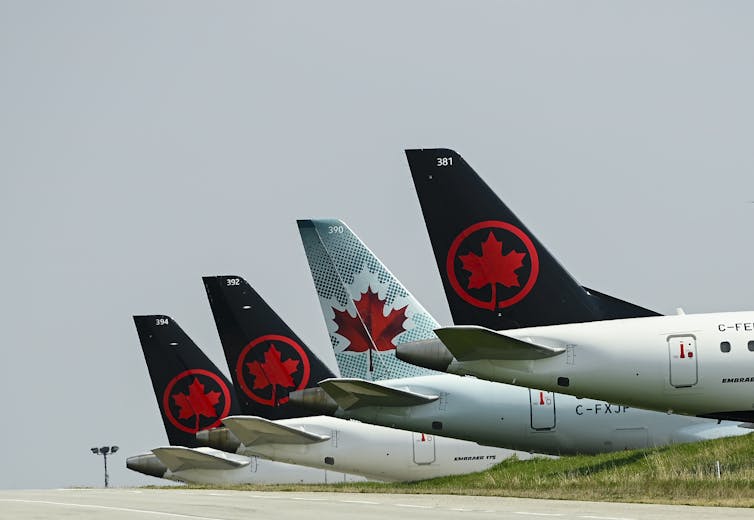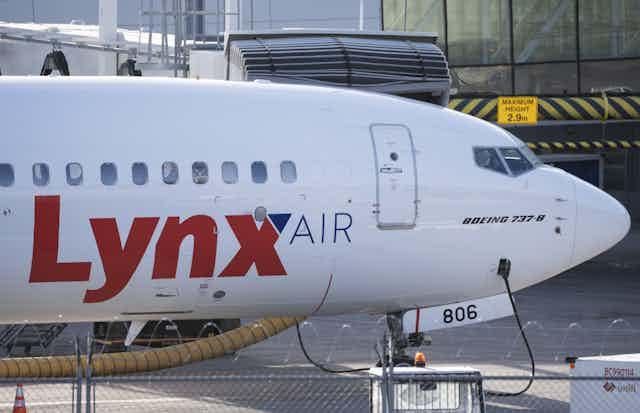Lynx Air is the latest in a long line of low-cost airlines to fail in Canada. The airline ceased operations on Feb. 26, four days after announcing it had entered creditor protection on Feb. 22.
This scenario is not novel in Canadian commercial aviation; Canada has had its fair share of discount carrier failings due to poor financial health.
Over the last 30 years, carriers such as Canada 3000, Nationair, Greyhound Air, Roots Air and SkyService have all succumbed to some form of financial duress and have disappeared from the Canadian discount carrier scene.
The closure of Lynx provides us with an opportune time to review the state of Canadian commercial air travel and identify the challenges and opportunities Canada has in maintaining, and possibly improving, the sustainability of the sector.
Why did Lynx fail?
For several weeks earlier this year, speculation was rampant that a merger between Flair Airlines and Lynx was close. This would have meant Canadian air travellers seeking low airfares would face an uncertain future with one fewer ultra-low-cost carrier.
Neither carrier publicly acknowledged the existence of such an agreement, simply stating they would not comment on market speculation.
The circumstances surrounding the financial state of Lynx — a private company not required to publicly disclose its operating and financial performance — were cited as the principal drivers of the Lynx situation.

One would normally expect the firm that was rumoured to be acquiring Lynx to be able to address any and all financial considerations of the merger. But Flair seemed to have financial and legal issues of its own, ranging from corporate governance to finances.
The merger failed to be consummated, with numerous claims contained in the Lynx court documents pointing to the need to repay one of Lynx’s shareholders’ debt.
In short, there were two financially weak airlines attempting to consolidate, with neither having sufficient financial strength to complete the merger. Lynx prepared its bankruptcy filing in short order, as it was also experiencing significant financial stress.
Why haven’t airlines learned from these failures?
Airline entrepreneurs that launch discount carriers are driven by the belief that the success of their airlines is closely tied to their ability to attract a substantial number of passengers. They aim to stimulate travel demand and maintain their competitive stance in the markets they serve.
A common element among most of these entrepreneurial-focused airlines has been to use pricing as a key tactic for market stimulation and capture.
Throughout most of 2022 and early 2023, Lynx and Flair were price leaders in North America, sometimes by significant margins. They primarily competed with one another, introducing new services across Canada and the United States, providing airfare savings to Canadians and creating demand.
But this price competition did not create enough revenue to generate even marginal profitability. The established airline duopoly in Canada — Air Canada and WestJet — did not actively respond to these price initiatives, as they were occupied with rebuilding their capacities following COVID-related layoffs.

In the fall of 2023, after the absorption of both Swoop and Sunwing into the WestJet family, both WestJet an Air Canada undertook a number of pricing actions. They began offering competitive routes overlapping with Flair and Lynx, which narrowed the price gap among Canadian carriers.
The countdown had begun on the longevity of discount carriers. Lynx ran out of time and money in February 2024 and the clock is most likely ticking on Flair’s ability to remain viable.
Is the duopoly once again to blame?
The pricing actions undertaken in fall 2023 seem to point to very specific initiatives designed to lessen the attraction of discount carriers, particularly among WestJet and Air Canada’s customers.
Despite the power of frequent flyer reward programs and the inclusion of travel elements that are considered ancillary to discount carrier fare offerings, the fear of a recession has significantly lessened the demand for air travel in Canada. Corresponding pricing actions have followed.
The pricing allure of discount carriers faded rapidly and forced them to further reduce airfares to maintain their position in the marketplace.
The Canadian government has steadfastly maintained its belief that the air carrier marketplace should be free of government oversight and that carrier survivability is best judged by air travellers themselves.
A new approach is needed
The time might now be ripe to consider a new regime for managing pricing behaviour among airlines that are pricing below a profitable return. There is also a need to address the actions of WestJet and Air Canada, which have been engaging in aggressive pricing actions aimed at undermining discount carrier sustainability.
An ever-increasing number of potential amendments to the Canadian commercial air travel model have been suggested, most notably those that look to the creation of a civil aviation agency similar to the Federal Aviation Administration in the United States and the Civil Aviation Authority in the United Kingdom. This would separate the commercial oversight from the regulatory actions, both of which are currently administered by Transport Canada.
Another opportunity would be to create a regulated airfare pricing regime that would establish floor pricing for discount carriers, as well as pricing limits for larger scheduled carriers competing with discount carriers. This would allow discount carriers the breathing room to offer fares without threat from aggressive pricing actions.
The lessons of discount carriers’ failures and the subsequent angst felt by both air travellers and airline staff must be recognized and action taken to change course. The reputation of the Canadian air travel marketplace deserves better.


